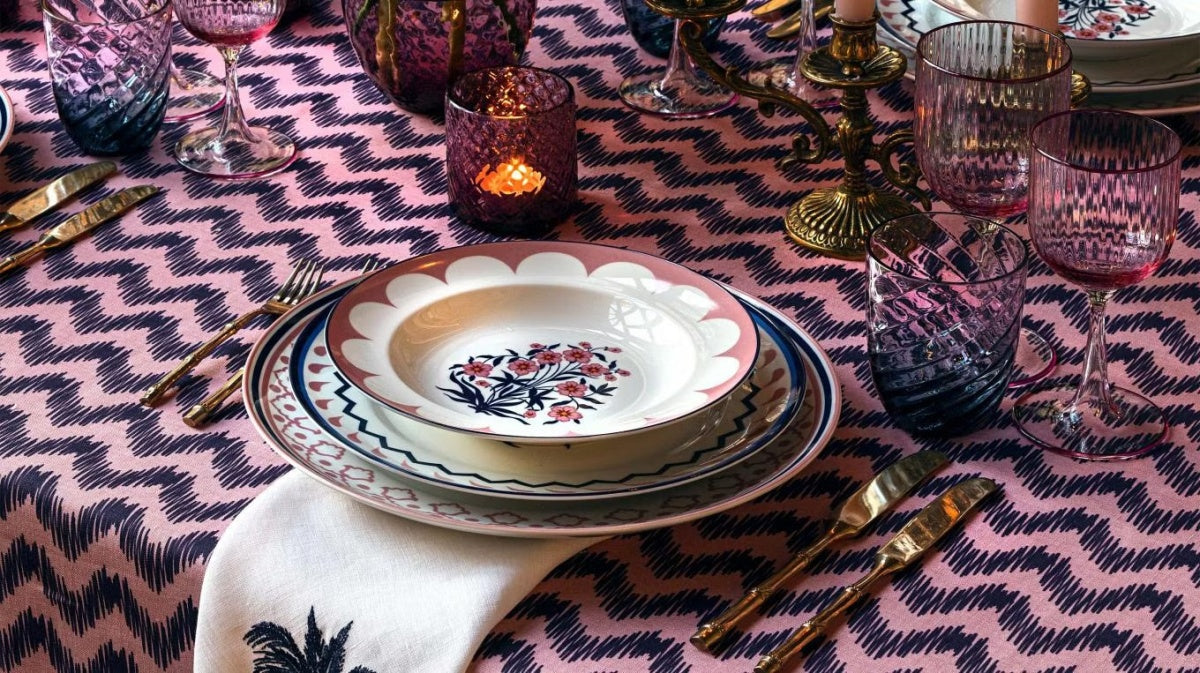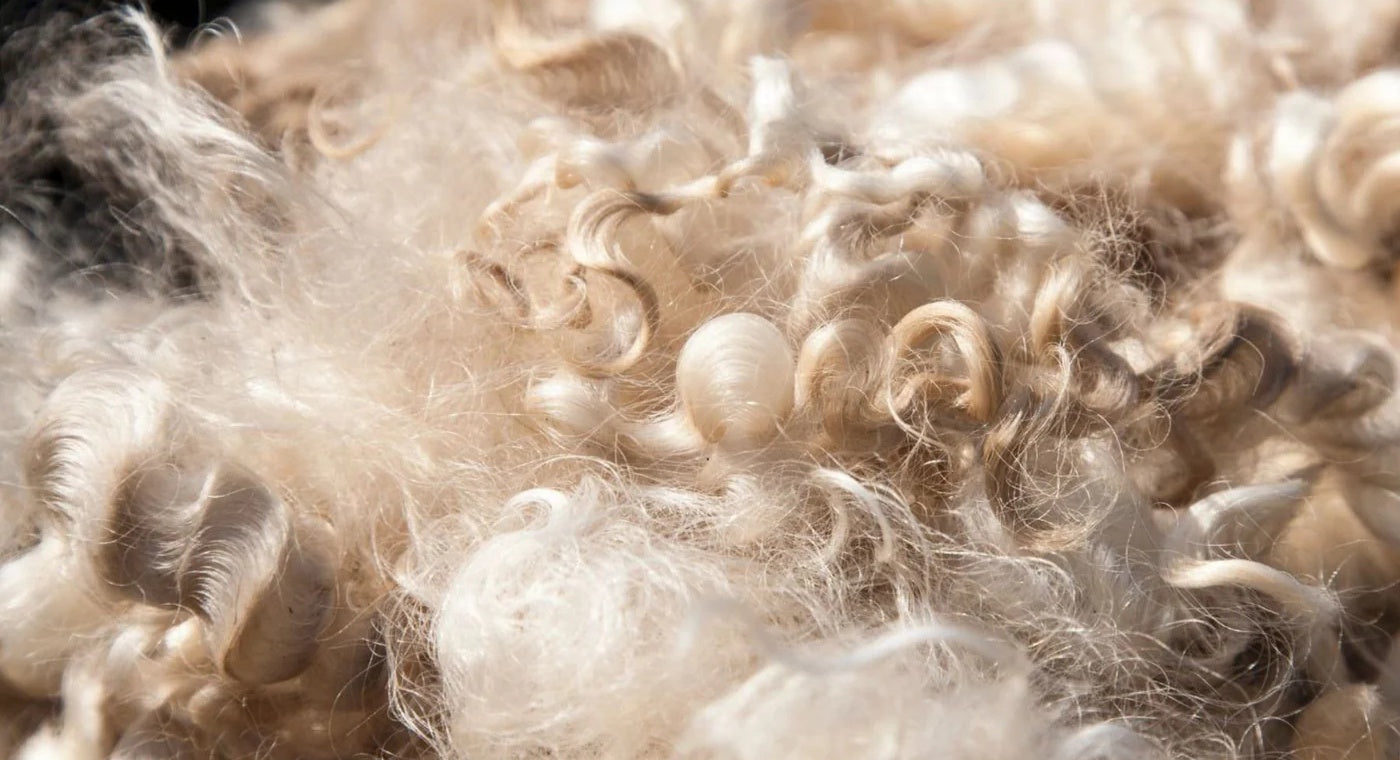
MOHÉR, CASHMERE OR QIVIUT - DO YOU KNOW THE DIFFERENCES?
NOT A WAVE LIKE A WAVE
Wool is the hair from various species of mammals, such as sheep, goats, alpacas, musk oxen, bison, rabbits, camels, etc. The wool obtained from these animals is divided according to several criteria, such as species, breed, or fiber diameter.
Virgin wool (VIRGIN WOOL)
Virgin wool is the wool from the very first shearing of a lamb. Lambs are usually ready for shearing when they are about a year old, and the wool from this first year shearing is highly prized. The hair fibers that sheep produce become coarser as they age, so the wool obtained from lambs is the softest type of sheep's wool.
New wool (NEW WOOL or PURE NEW WOOL)
New wool is wool that is shorn from live sheep and has never been part of another finished product. The wool is quite dirty after being shorn, so it is usually washed or combed before being carded into straight strands of fiber. This carded fiber is then spun into yarn using hand or automatic spinning machines. Once the wool yarn is made, it is washed again and then loaded onto large bobbins.
The process for producing virgin wool from lambs is no different from the process used to produce new wool from adult sheep. However, the resulting yarn is much softer than yarn made from fibers derived from adult sheep.
Recycled wool (RECYCLED WOOL)
To create recycled wool, existing wool garments are crushed, breaking down the fibers that were originally spun. The wool fibers are then re-dyed or preserved in a new recycled dye, before being spun into yarn.
A recycled wool product made from these fibers is not as strong as new wool and is more likely to wrinkle, stain, or retain odors. New wool fibers also have better elasticity than recycled wool fibers, and garments made from new wool last much longer.
WHAT TYPES OF FIBERS DO WE KNOW?
FLEECE
Sheep wool is one of the oldest spinning materials in the world. Sheep were first domesticated about 10,000 years ago, records of woolen textiles appear around 6,000 BC, in Europe from 1500 BC
This wool comes from sheep that are sheared regularly. Shearing the fleece is vital for the health of the sheep. The highest quality wool comes from sheep raised in Australia and New Zealand.
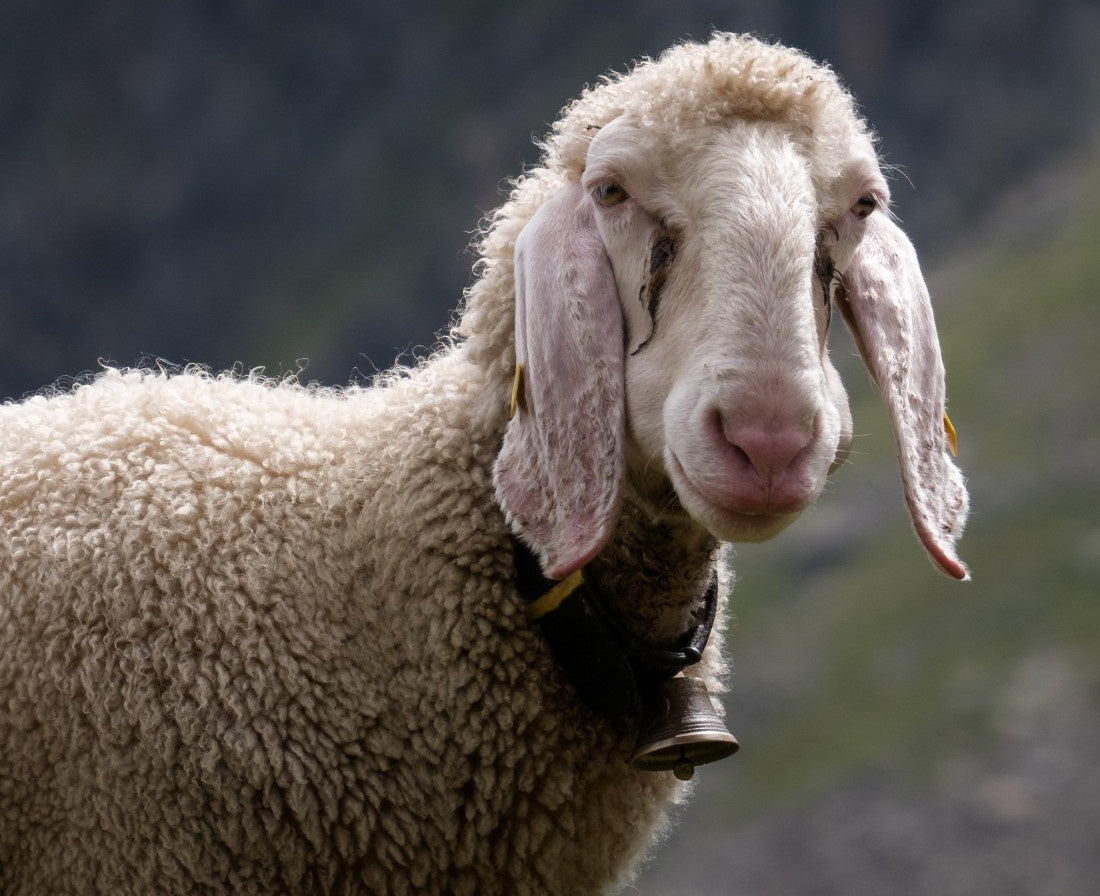
PROCESSING
Sheep are sheared once or twice a year using shearing machines. The entire fleece should remain together during shearing. The fineness and therefore the quality of the wool in the fleece varies from part of the body. The best wool comes from the shoulder and flank areas, followed by the back, neck and thighs. The belly wool is often heavily matted due to lying down. After shearing, the fleece is sorted according to quality.
The fat content of the wool can even be an indication of quality, as the quality and uniformity of the wool depends on the production of fat in the skin glands that bypass the hair roots. In order to reduce the transport weight, some of the dirt (feces, burrs, thorns, pieces of wood, etc.) is removed before shipment. Since wool sweat is the best protection against seawater during transport and sweat wool can be stored practically indefinitely, a large part of the wool is shipped overseas with a residual content of sweat and wool fat. In the processing country, this is followed by washing in the factory, during which the wool has a residual fat content of only 0.5 to 1%, which protects the wool, keeps it supple and prevents it from becoming brittle.
In further processing, wool fibers are spun into smooth, fine or coarse bulky yarns using the worsted spinning process. The surface of the wool fiber is made up of roof tile-like scales that are covered with a thin membrane. This membrane makes wool one of the smoothest fibers. The inside of the hair is made up of two different types of cells. These slightly twisted halves react differently to moisture because one type of cell swells more than the other, and because they are both tightly connected, they are constantly in motion. This special property gives wool its elasticity and natural self-cleaning effect. The fine scales on the surface of the fiber gently massage the skin and stimulate blood circulation. Wool regulates temperature and is particularly breathable. It can absorb more than a third of its own weight without feeling damp and does not cool down even when wet.
WORLDWIDE PRODUCTION
The world's largest producer of sheep wool is Australia. The country produces almost 500,000 metric tons of wool annually. After Australia, the second largest producer of sheep wool is China with approximately 250,000 metric tons annually, followed by the United States with 150,000 metric tons of wool, then New Zealand, Argentina and Turkey.
LAMB WOOL
Lamb's wool is the wool from the very first shearing of an animal (usually around 7 months of age) and cannot be longer than 50mm. The difference between lamb's wool and wool from adult sheep is that it is finer, softer, lighter and produced in very small quantities, making it rarer and more expensive.
GEELONG
Wool from lambs from the Geelong region, southwest of Melbourne. The breed of sheep that comes from here produces wool that is considered to be one of the finest in the world. Its unusual softness only develops after 3 to 4 washes.
MERINO
Merino is a breed of sheep and Merino wool is simply the wool that comes from that breed. It is not a quality mark of wool. Merino wool has become popular with the advent of new technologies that allow for much lighter fabrics with a softness that feels next to the skin. While Merino sheep have been around for hundreds of years, it is these innovations over the past 50 years that have allowed wool manufacturers to increase comfort and apply it to more consumer products than was previously possible.
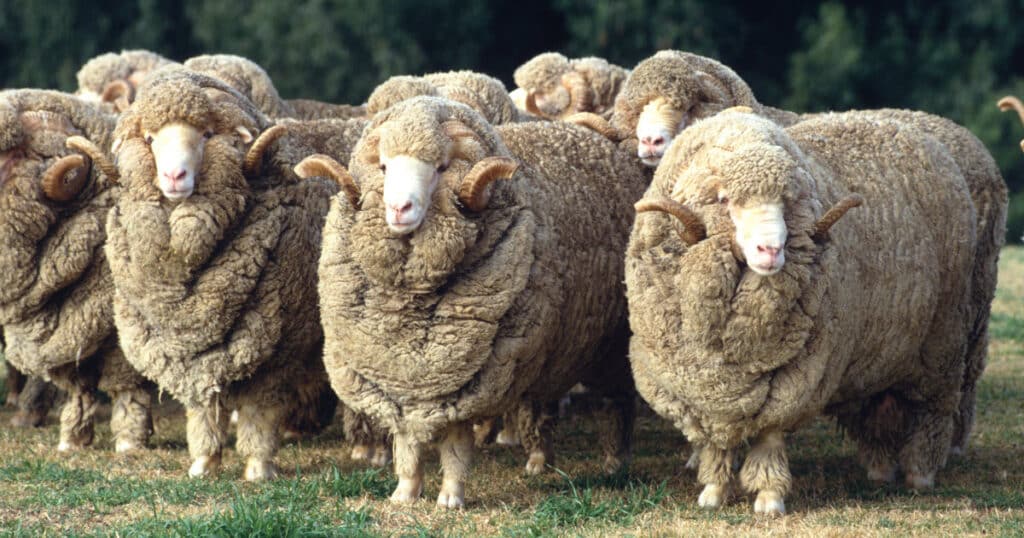
Until the Middle Ages, Merino sheep breeding was reserved for the most distinguished courts of Europe. Their wool was only allowed to be processed into royal fabrics. In Spain, exporting Merinos was even punishable by death. Only the monarchs themselves gave one of their most valuable animals to another monarch on special occasions. However, in the 18th century, a brave sailor managed to smuggle the first sheep from England to Australia, where they are now mainly bred.
Merino wool is soft, insulating and breathable. It is particularly fine, with fibers only about 15 to 24 microns thick. Merino wool also neutralizes odors and regulates moisture.
ALPACA
There are four species of camelids in South America: the llama, the alpaca, the guanaco, and the vicuña. The latter two live in the wild, the guanaco being the ancestor of the llama and the vicuña of the alpaca.
Alpaca is a domesticated form. A rare fur that is all very fine, soft, silky, shiny, not too curly and yet quite strong. It comes from animals in the Andean regions of South America, where they have been bred for thousands of years. The wool from these animals is an important part of Andean culture, which is known for its craftsmanship and traditional weaving.
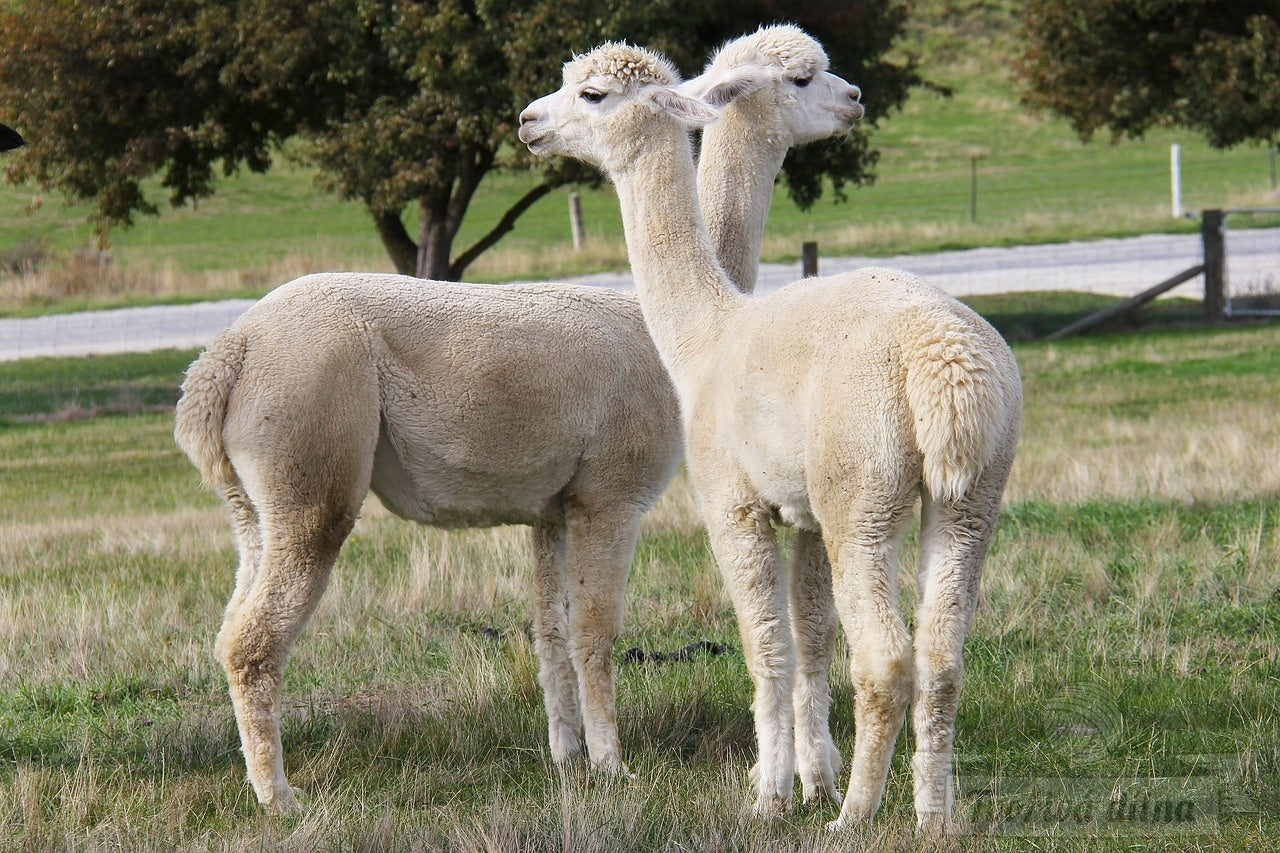
The animals are "partially sheared" every two years, meaning they are not naked like sheep, because a naked animal would not be able to withstand the cold. The animals' fur comes in various colors, black, dark brown, gray, beige, and there are over 20 natural shades. Since it is still often processed by hand today, the wool remains high in fat. This makes the wool particularly valuable.
Alpaca wool is particularly soft, light and warm. It offers excellent thermal insulation and is also breathable. The wool is also hypoallergenic because it does not contain lanolin and has a natural resistance to moisture. All these properties make alpaca wool an extremely sought-after material in textile production.
DIFFERENCES BETWEEN ALPACA AND MERINO
Fiber structure and thickness
Both alpaca and merino wool have fine fibers, but alpaca wool is usually thicker than merino wool. Alpaca fibers are approximately 16 to 30 microns in diameter, while merino fibers are only 15 to 24 microns thick.
Thermal efficiency and breathability
Alpaca wool is warmer than merino wool because it offers better thermal insulation due to its hollow fiber structure. However, both types of wool are breathable and moisture-regulating, with merino wool generally considered to be more breathable due to its finer fibers and greater elasticity.
Softness and comfort
Both types of wool are soft and pleasant to the skin, but merino wool is generally finer and softer than alpaca wool, as merino fibers are thinner and can more easily adapt to the contours of the body.
Care and durability
Alpaca wool is more durable and less prone to pilling than merino wool. However, merino wool is easier to care for because it can usually be machine washed, while alpaca wool should only be hand washed.
Vicuna
Vicuna wool comes from the vicuna, an animal related to the llama. It is by far the rarest wool because there is very little of it. Vicunas are found only in the wild and can only be sheared once every three years. The vicuna has a very fine, golden-brown coat. This provides the finest wool fiber of all mammals. The fibers obtained from the vicuna's fur are finer than cashmere and yet very strong.
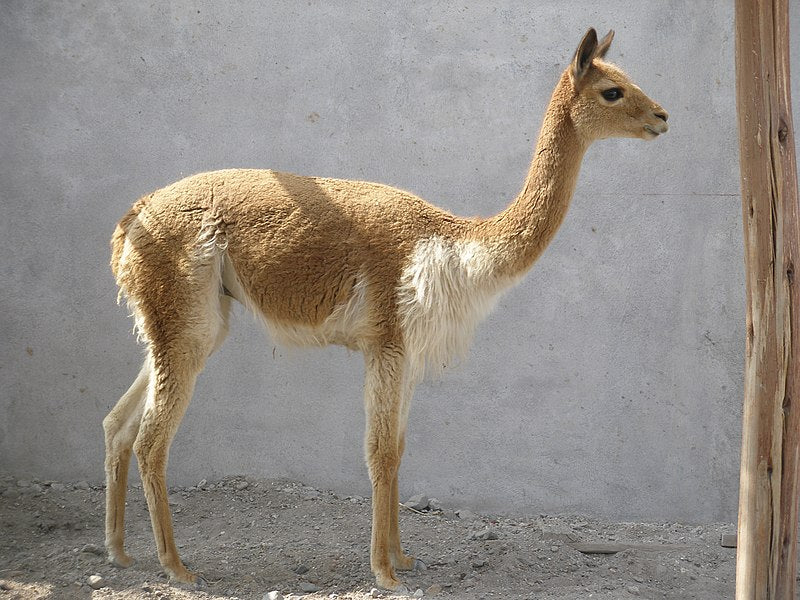
In ancient times, the Incas therefore held a vicuña hunt every four years. They herded the animals into large stone enclosures, sheared them and released them back into the wild. However, with the arrival of Europeans in South America, the peaceful attitude towards vicuñas ended. Europeans shot vicuñas for their high-quality fur and meat, which led to a dramatic decline in their population. Of the original population of vicuñas in South America, only 6,000 remained in the 1960s. Since the 1960s, vicuñas have been strictly protected and their numbers have risen again to around 350,000 individuals. However, they are still threatened, both by loss of habitat, competition from domestic animals and poachers who still hunt them for their high-quality fur.
Vicunas are very well adapted to the high-altitude environment not only due to the quality of their fur, but also due to the properties of their blood. The blood pigment hemoglobin binds oxygen more efficiently and the blood contains more red blood cells than other mammals.
MOHAIR
Mohair is a yarn made from the hair of the Angora goat. It is characterized by a high shine. The wool is white, slightly curly and fine. Thanks to its excellent insulating properties, it keeps you warm in winter, while its moisture-wicking properties allow it to be pleasantly cool in summer. It is durable, naturally elastic, flame-retardant and wrinkle-resistant. Fabrics made from it have similar properties to those made from lambswool.
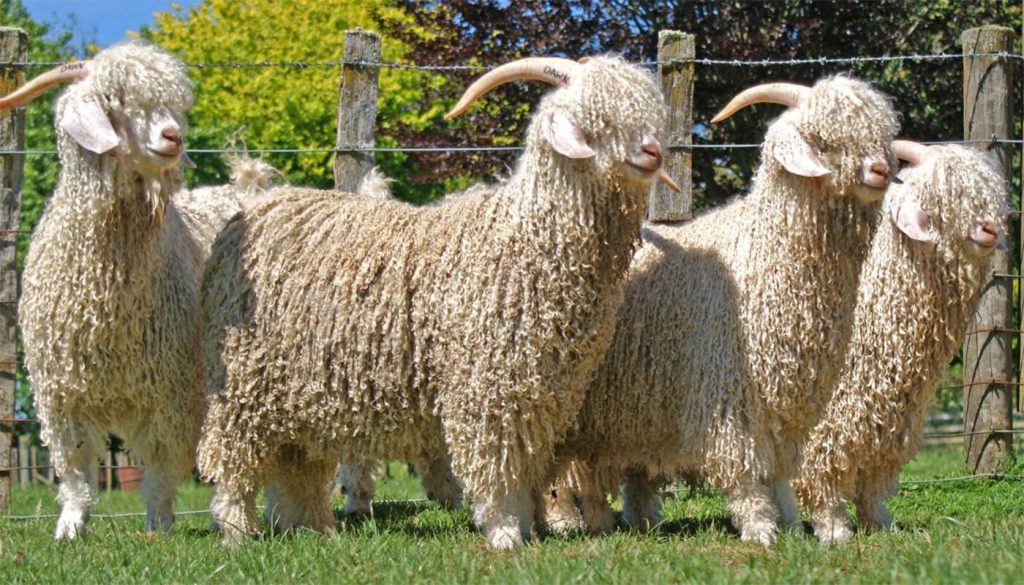
Compared to sheep's wool, mohair is much softer and has a distinct sheen. It is also popular for its compatibility with most types of dyes. Mohair is also much more elastic than most types of wool, is wrinkle-resistant and almost flame-resistant. Another notable property of mohair is its resistance to felting. Most types of wool contain scales, and when these wools are washed at the wrong temperature, the scales stick together and the fabric shrinks. However, the scales on mohair wool are not fully developed, which means that garments made from this wool do not shrink.
Shearing usually takes place twice a year, in spring and autumn. Each Angora goat produces about 7 kg of mohair per year.
Mohair wool from Angora goats should not be confused with Angora wool, which actually comes from Angora rabbits.
CASHMERE
This wool comes from the cashmere goat native to Central Asia (Himalayas), Mongolia, Persia and Afghanistan. The fiber is similar to natural silk. The fascination of this fiber lies in its softness, silky shine, fineness and suppleness, which are hardly surpassed by any other fiber.

Temperatures in the Himalayas can drop to -40°C in winter. Although most people would not be able to survive these conditions, this is the natural climate for the nomads and the animals that live there. Cashmere goats protect themselves from these cold temperatures by developing soft wool fibers in their fur.
Temperatures rise again in the spring, when the cashmere goats begin to shed their fur. Cashmere wool is not obtained by shearing, but by collecting the hair that the animals lose in the spring and combing it out with coarse wooden combs. Cashmere wool can be white, gray, brown or even black. Cashmere is finer, lighter, softer and offers three times better insulation properties than sheep's wool.
Cashmere hairs are usually 9 to 15 cm long. Before being made into clothing, the fibers are hand-washed and spun by nomadic women. The fact that these processes are carried out by hand explains the high price of the wool.
Cashmere is a rare raw material: a goat produces only 150 to 200 grams of cashmere wool per year. This means that the wool from 4 goats is needed to make a single sweater. Due to its high price, cashmere is rarely processed in its pure form and is usually blended with the finest merino wool.
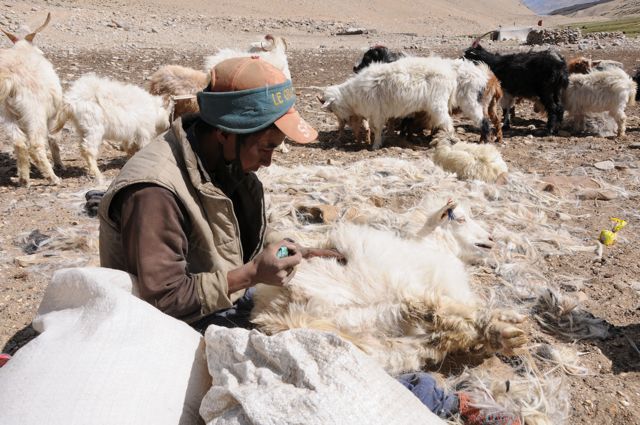
There are several different breeds of cashmere goats, and the most famous breed is the Changra or Ladakh Pashmina goat. These goats provide the softest and most expensive cashmere wool, which is known as pashmina.
Yak wool
As is the Asian highland cattle. Yak wool is used to make wool blankets, knitted clothes, canvas, felt boots and tents. To obtain the wool, the animals are only combed and not sheared. This prevents premature shearing and makes the process pleasant for the animals.
Yak wool is robust, yet very light. Yak wool does not itch, keeps you warm even in extremely low temperatures and can absorb a lot of moisture.
Qiviut or MUSKR WOOL
The Inuktitut word qiviut (pronounced "kiv-ee-ute") refers to the wool of the musk ox. Musk oxen live in herds in northern Canada and Greenland, with a total population estimated at 160,000 at the beginning of the 21st century.
Qiviut is obtained by combing musk oxen or by hand collecting the fallen tufts of fibers that are caught on trees, bushes or in tall grass during the spring molting. An average of 1.5 kg of raw fine fibers are collected from each, from which about 0.9 kg of material for textile processing is obtained after hair removal by hand brushing. The total annual yield is estimated at 5 to 6 tons. Washed wool is sold for 500-1000 €/kg.
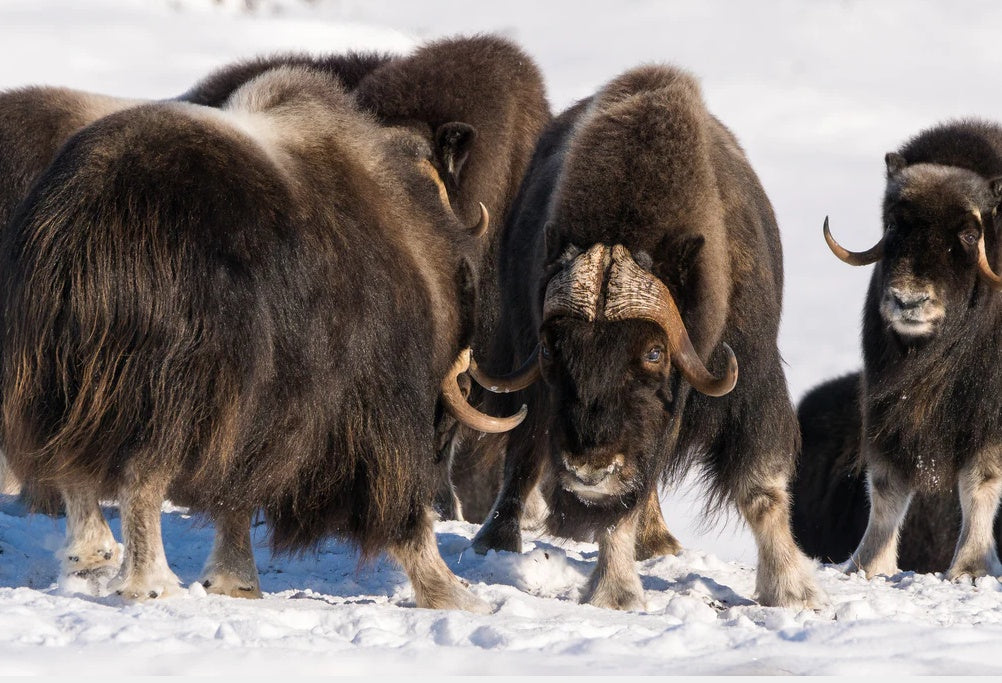
Qiviut is an ultralight fiber, very soft (softer than cashmere), high quality, durable, non-felting, non-biting, non-scratching and non-shrinking. It is about 8 times warmer than sheep's wool and is considered one of the warmest fibers in the world.
The northern musk ox is a large animal with very thick fur. Its name comes from the odor that males emit during the rut. They use this very strong musky odor to attract females.
CAMEL WOOL
Camel wool is a fabric made from the hair of camels. Sometimes called camel cashmere or camel hair, it usually comes from the Bactrian camel. These camel species are common in the Mongolian steppe region and can be found in a wide area from Turkey to China and Siberia. Unlike most camels, which are short-haired, Bactrian camels are known for their long, shiny hair. It consists of two distinct parts: the undercoat and the guard hair. The guard hair is hard and coarse and does not make a very good yarn unless mixed with another hair, such as sheep's wool. This part of the hair protects the camel from the harsh winters of the steppe.
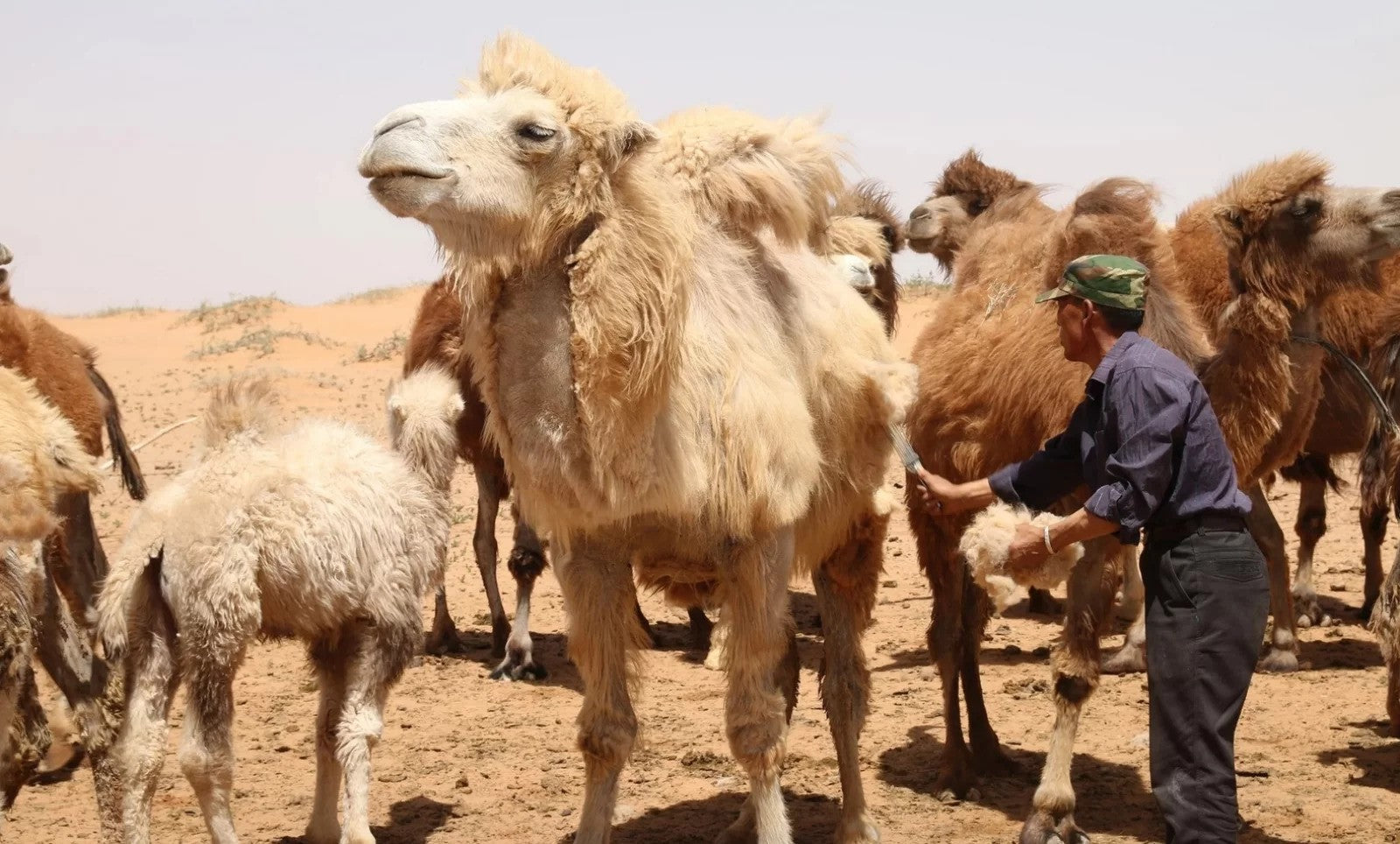
Like other types of wool fibers, camel hair has hollow, air-filled matrices that make it an excellent insulator. In addition, high-quality camel wool is almost as soft as cashmere and, in fact, is often blended with cashmere to create luxurious garments. The coarser camel wool is often used to make carpets.
Every year, a camel begins to grow a thick coat in late summer. By late October, this coat is nearing its full thickness, but by mid-winter, it will be even more robust. As soon as the frost begins to melt in spring, the dromedary camel prepares to shed its coat.
Most of the world's camel wool is produced in Mongolia. Many of these farmers are still nomadic and harvest camel wool using the same methods that have been passed down from generation to generation for hundreds, if not thousands, of years. Camel wool is even mentioned in the Bible as a material used to make tents, cloaks, and carpets.
Bactrian camel yarn is one of the most expensive types of wool. It is considered a luxury textile and is comparable in price to other exclusive wools such as mohair and cashmere. One factor that contributes to the price of camel wool is the fact that it is almost never produced in a factory setting.
ANGORA
Angora wool comes from the Angora rabbit. The fibers are hollow and extremely fine (about 10-15 microns). The combination of these properties makes it even warmer and softer than Merino, cashmere and mohair. However, this fineness lacks durability, so it is usually blended with other fibers to give the yarn elasticity, as Angora fiber is not naturally elastic.
Angora wool does not have the allergenic properties inherent in other types of wool, making this fiber a must-have alternative for people with allergies to animal fur.
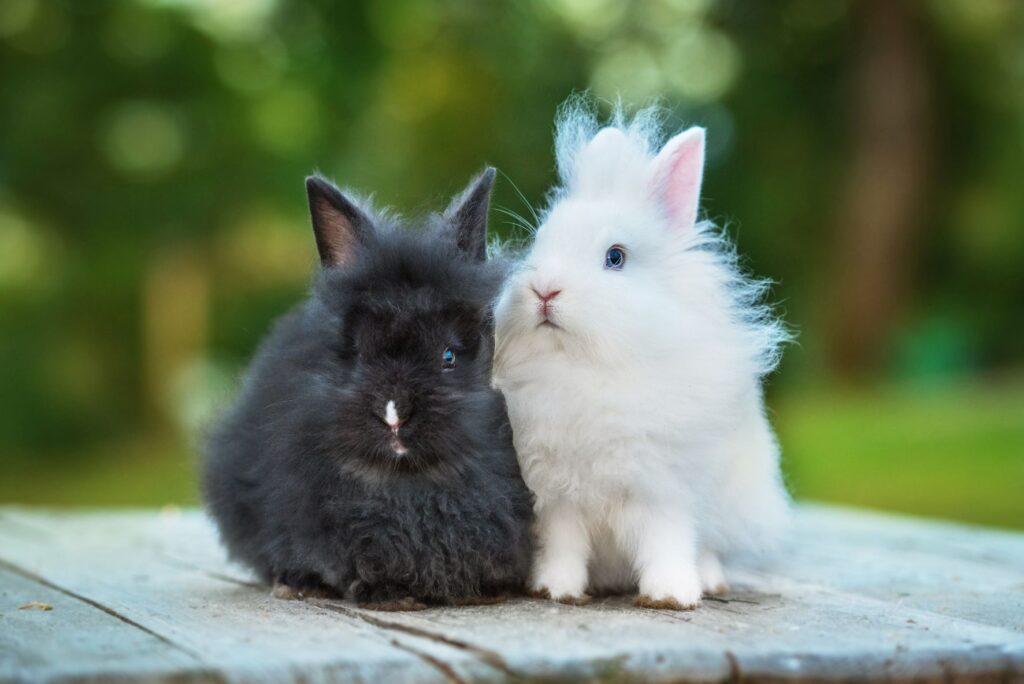
Angora rabbits were first bred in Ankara, Turkey, known in Europe as Angora. First brought to France in 1723, Angora rabbits quickly became popular among the French nobility, and the Angora fashion quickly spread throughout the European aristocracy.
At this time, Angora rabbits were not primarily used for wool production. Instead, they were kept as pets, often by children who were captivated by their incredibly voluminous and fluffy fur. The first records of large-scale production of Angora wool date back to the early 20th century in the United States. American entrepreneurs, who saw Angora wool as more than just decorative, quickly established businesses producing scarves, sweaters, and other items from Angora wool.


